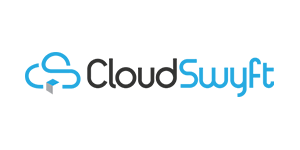An introduction to data science
Find out all there is to know about data science as we explore what it is, why it's important and what the future holds for data science.

Data is all around us. It is estimated that each day, a staggering 2.5 quintillion bytes of data are created. With a number so mind-boggling, it’s easy to see how much of an impact data can have.
With data taking over the world, you just might be curious enough to learn a little bit about data science. Here, we provide a basic introduction to data science. We’ll be discussing what it is, why it’s important, and what the future holds for data science.
What is data science?
So, what is data science, and where did it come from? In 2001, William S Cleveland combined computer science with data mining to create a more technical approach to statistical analysis. As a result of this combination, data science was born.
To put it simply, data science is the combination of programming, mathematics, and statistics to extract meaningful insights. It is an umbrella term that encompasses any techniques, tools, and concepts that relate to useful data. Data science utilises these various tools and techniques to identify patterns, anomalies, and correlations in data.
The rise of big data
When reading about data science, you’ll find that it is often used in reference to big data. But what is big data? It’s a term used to describe large sets of data that need to be broken down using tools and techniques to obtain representative data. Big data sets are so large and complex that traditional software cannot process them.
Although big data has been around for much longer, 2010 brought a spike in the use of data science. More and more businesses were turning to data science to draw insights. Since then, the total amount of data has been rapidly increasing.
By 2019, a whopping 90% of the world’s data had been created within the prior two years. The fast development of data usage is immense. Naturally, with so much data to analyse and get through, data science is relevant now more than ever.
-

 University of Dundee Data Science in the Games IndustryScience, Engineering & Maths,IT & Computer Science
University of Dundee Data Science in the Games IndustryScience, Engineering & Maths,IT & Computer Science -

 Griffith University Big Data Analytics: Opportunities, Challenges and the FutureBusiness & Management
Griffith University Big Data Analytics: Opportunities, Challenges and the FutureBusiness & Management -

 CloudSwyft Global Systems, Inc. Introduction to Data Science with Microsoft AzureIT & Computer Science,Science, Engineering & Maths
CloudSwyft Global Systems, Inc. Introduction to Data Science with Microsoft AzureIT & Computer Science,Science, Engineering & Maths
Why data science is important
Now we know what data science is used for, let’s look at what makes data science so important. Why do we need to pull and analyse all of this data?
The data collected from data science can be used in various ways within a business. It’s not just the data teams that utilise it – marketers, software engineers, and those making business decisions all have a hand in data science.
By analysing data, we can determine trends and patterns to help us make better decisions within a business. These decisions will vary greatly depending on the type of business, but data acts as a useful tool to make informed decisions.
Rather than going in blind and assuming the outcome of a campaign or a business strategy, we can interpret and analyse data sets. By doing so, we’ll have evidence that our work has the potential to make a difference.
The impact of data science
As well as helping make business decisions regarding strategies and plans, data can also inform us of what not to do. If we see negative trends and correlations within data, this tells us that whatever caused it should be avoided. As a result, we can then test other elements to find a more favourable outcome.
The use of data can be effective for growth, reduce uncertainty, and can save money on what would otherwise be wasted efforts. Big companies such as Netflix use big data in various ways to retain customers, create the right content and save on spending.
Data science process and concepts
So, how does such a powerful process work? Let’s look at the data science process and discuss some data science concepts. The process of collecting data as a data scientist is as follows:
- Collecting data from a variety of sources
- Prepare collected data for analysis
- Perform analysis of data
- Determine useful insights
- Visualise insights in a digestible format
- Share insights with others
- Make informed decisions based on findings
How you carry out these steps and which tools you use will depend on the data and business. To find out more about the data science process, check out our Introduction to Data Science for Business course.
Data science concepts
There is a wide range of concepts used within the data science field. Let’s explore just a few of these concepts.
Data mining
With so much data being constantly collected, not all of it will prove helpful. It’s important to only work with usable data – otherwise, we wouldn’t have time to analyse it all.
As we explored in our introduction to data mining article, we can do this via a process called data mining. By mining data, you can extract useful information from larger raw data sets. The process uses mathematical and statistical algorithms to detect correlations, patterns, or anomalies in data.
Machine learning
A crucial concept in data science, machine learning is a type of artificial intelligence that allows machines to learn from data and improve. Machine learning algorithms are used to teach computers to think in the same way that humans do.
Machine learning utilises past experiences to better understand statistical patterns in the future. As the machine is given more data to consume, it will gradually become better at identifying differences in data.
If you’re keen to learn more about machine learning, check out our Machine Learning Foundations Microcredential.
Data visualisation
When you have large data sets to work with and lots of insights to mull over, it can be overwhelming at times to review the data. Also, you may need to share your data with others that may not be able to understand and process data.
That’s where data visualisation tools come in. These tools let you create charts, graphs, maps, dashboards, and more that visualise meaningful data. They’re an excellent way to ‘translate’ data to others. We’ll take a look at some examples of these tools in a moment.
Data science tools
- Programming languages – Programming skills can help you extract data, clean data, and even visualise it. Some of the most common languages used in data science are Python, R, and SQL.
- Visualisation tools – these are used to make data digestible. Some data visualisation tools include Tableau, Google charts, and data wrapper.
- Database management systems – used to store and manage vast amounts of data; some examples include Snowflake and MySQL.
-

 FutureLearn Data Visualisation: Creating charts and complex visualisations in TableauBusiness & Management,IT & Computer Science
FutureLearn Data Visualisation: Creating charts and complex visualisations in TableauBusiness & Management,IT & Computer Science -

 The University of Adelaide Data Analytics for ManagersBusiness & Management
The University of Adelaide Data Analytics for ManagersBusiness & Management
A career in data science
Behind the scenes of the data science process is the work of many data scientists. A career in data science is certainly an appealing one – let’s look at some of the benefits.
- Salary – this career offers competitive salaries all around the world. The average salary for a data scientist in the UK is £40,772, $97,051 in the US, and $92,261 in Australia.
- Job security – the data science landscape is extremely promising considering the growth and business opportunities. The role of a data scientist was even listed as number 6 in the US news’ list of top 100 jobs.
- Flexibility – data science isn’t specific to set countries or regions – it is being used by businesses globally. You could take your data science skills to other countries whilst travelling, and even work from home if your company allows it.
- Rewarding– data science involves a lot of creative thinking and problem-solving. You’ll need to keep up with trends and learn new tools – it’s a great career to keep your mind active.
If you are interested in a particular industry, there are many areas that data scientists have the choice to work in. Since the role of a data scientist is so versatile, you could specialise in tourism, healthcare, or even the games industry.
How to get into data science
If a career in the data science industry piques your interest, you may be wondering how to get started in the field. To become a data scientist, you’ll need to be familiar with analytical concepts. You can start by learning data science fundamentals and progressing through some tools and techniques.
Although a degree in a relevant discipline will certainly help secure you a data scientist role, you can also learn independently.
Luckily, there are many resources available online for you to learn data science basics from the comfort of your home. Some of the topics that could help you break into a data science career include:
What is the future of data science?
We’ve already explored how rapid the growth of data science has been in recent years. But what can we expect for the future of data science? Will we continue to see the data science industry soar?
The big data market value has been growing each year. In 2020, the global big data and business analytics market was valued at 198.08 billion USD. By the year 2030, it is projected to reach 684.12 billion USD.
Data science trends are constantly adapting – whether it’s new technologies or new advancements within current tools. Let’s briefly look at a couple of the trends we can expect to see.
Internet of things
For those who haven’t heard of the internet of things, or IoT for short, let’s set out a definition. IoT is the network of internet-connected objects that can collect and transfer data wirelessly without human involvement. This includes objects such as virtual assistants like Alexa, smart home thermostats, and smart cars.
The world is becoming increasingly more dependent on technology, and smart devices play a huge role in that. Data science can collect IoT data and transform it into valuable information to help us understand how these devices interact.
Augmented analytics
Another trend we can expect to see in the future is the rise of augmented analytics. This is a data analytics approach that automates the analysis process. It does this by using artificial intelligence technologies in place of the work of a data scientist.
With more businesses turning to digital methods, we are currently facing a global digital skills shortage. There is a huge demand for individuals with data analytics skills to accommodate our digital world, but not enough people to meet these demands. This is why augmented analytics may be sought after as a solution.
Final thoughts
Data science is an increasingly important component of any business – it provides crucial insights for informed decision-making. The industry continues to grow and create new job opportunities along the way.
We hope that this introduction to data science has offered a strong understanding of what data science is and what makes it important. If you’re keen to learn more about the wonders of data science, why not check out our Introduction to Data Science for Business course?






